Shaker furniture, exposed beams, soft colours and curated collections of antiques – there are few things more inviting than a traditionally styled countryside kitchen. Here we explain how you can recreate the look in 10 easy steps...
Create a light and inviting space
Think country kitchen and an image of a dark, cosy space might spring to mind – all painted beams, wooden floors and small casement windows. But today’s rustic kitchens are all about embracing the light.
There’s nothing more inviting than a clean, light, bright space, which is why neutrals and whites are the ideal choice, whether the room is modern or traditional in style. A pale scheme won’t date, goes with everything and bounces light around what could potentially be a gloomy room.
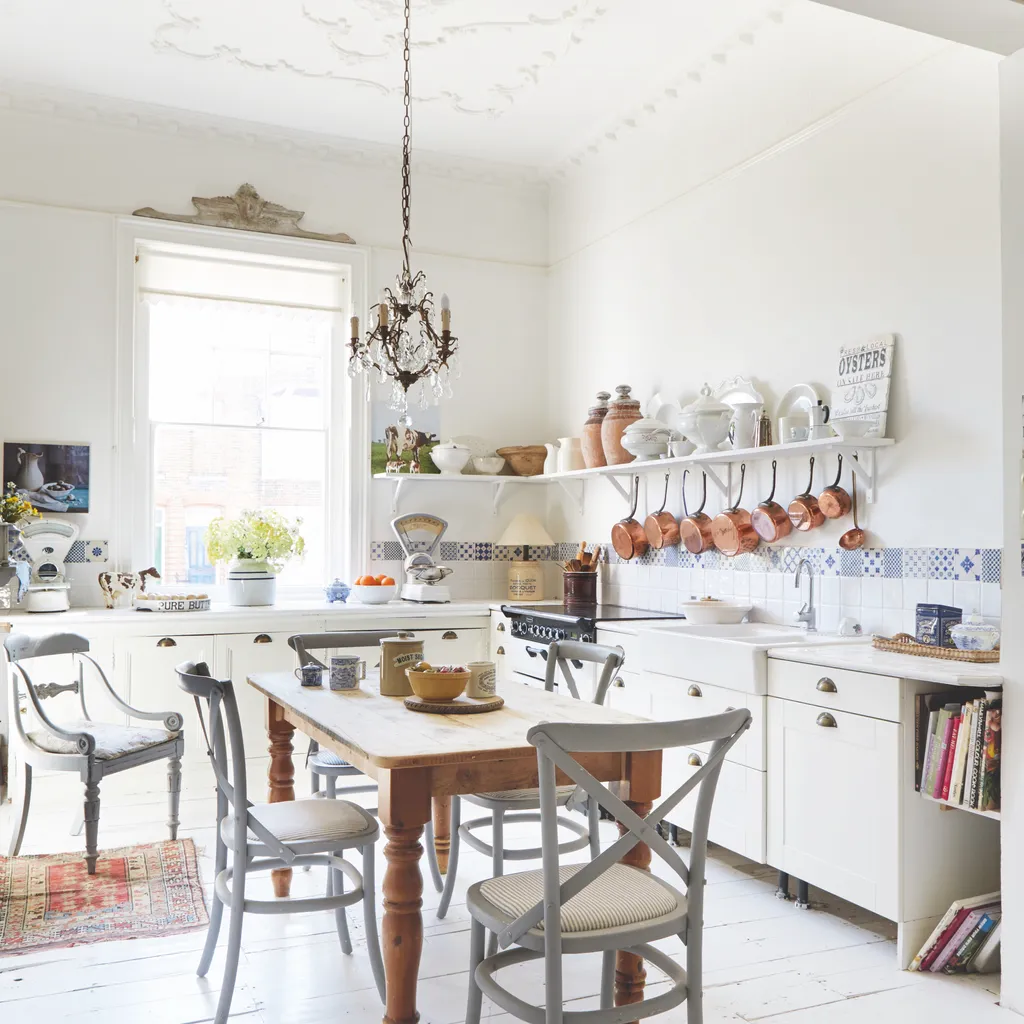
Introduce colour
A big trend in kitchens is coloured base and cupboard units with shades of blue, green and grey particularly popular. If that feels like too much of a commitment, use coloured units for just one area – such as the island – or paint a statement wall or choose colourful appliances.
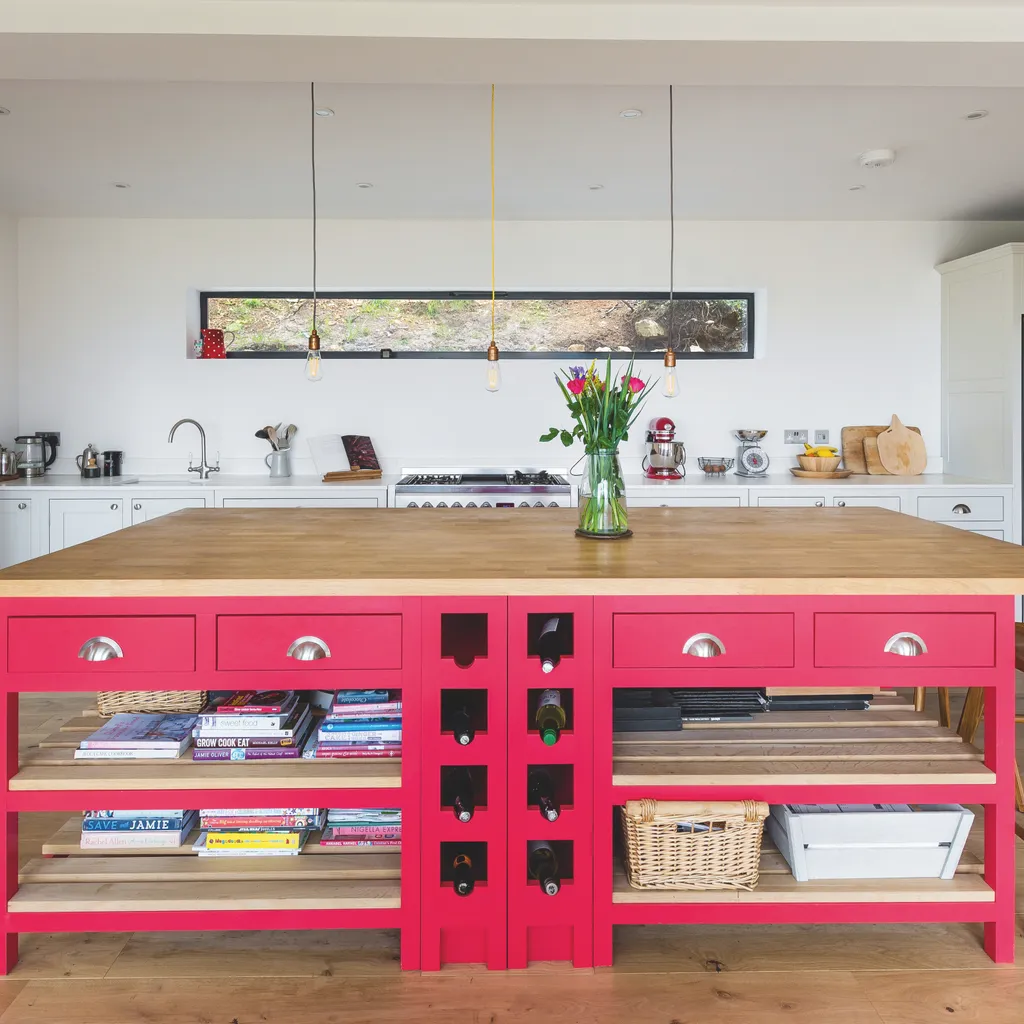
Invest in a dresser or cabinet
Inject instant character into your kitchen by investing in an antique Welsh dresser. Not only are they beautiful to look at, but are also extremely practical. The antithesis of the fitted unit, the dresser will endow your kitchen with enviable country charm, as well as offer up the perfect spot to showcase your culinary collectables.

Pick complementaryworktops and sinks
A ceramic Belfast sink is the obvious choice for a country kitchen, but it isn’t your only option. Composite sinks are hardwearing, scratch and stain-resistant and come in a wide range of colours.
‘If you are thinking of a Corian worktop, you can opt for a seamless sink where they use the same material for both, giving a very high-end look,’ says Darren Watts, Design Director at Wren Kitchens.
And for worktops? ‘For strength and longevity, I would recommend quartz as it’s non-porous, stain-resistant and can easily be brought to a good-as-new finish using a microfibre cloth. If wood is your dream, don’t be afraid of it, just be aware that it requires some maintenance.’
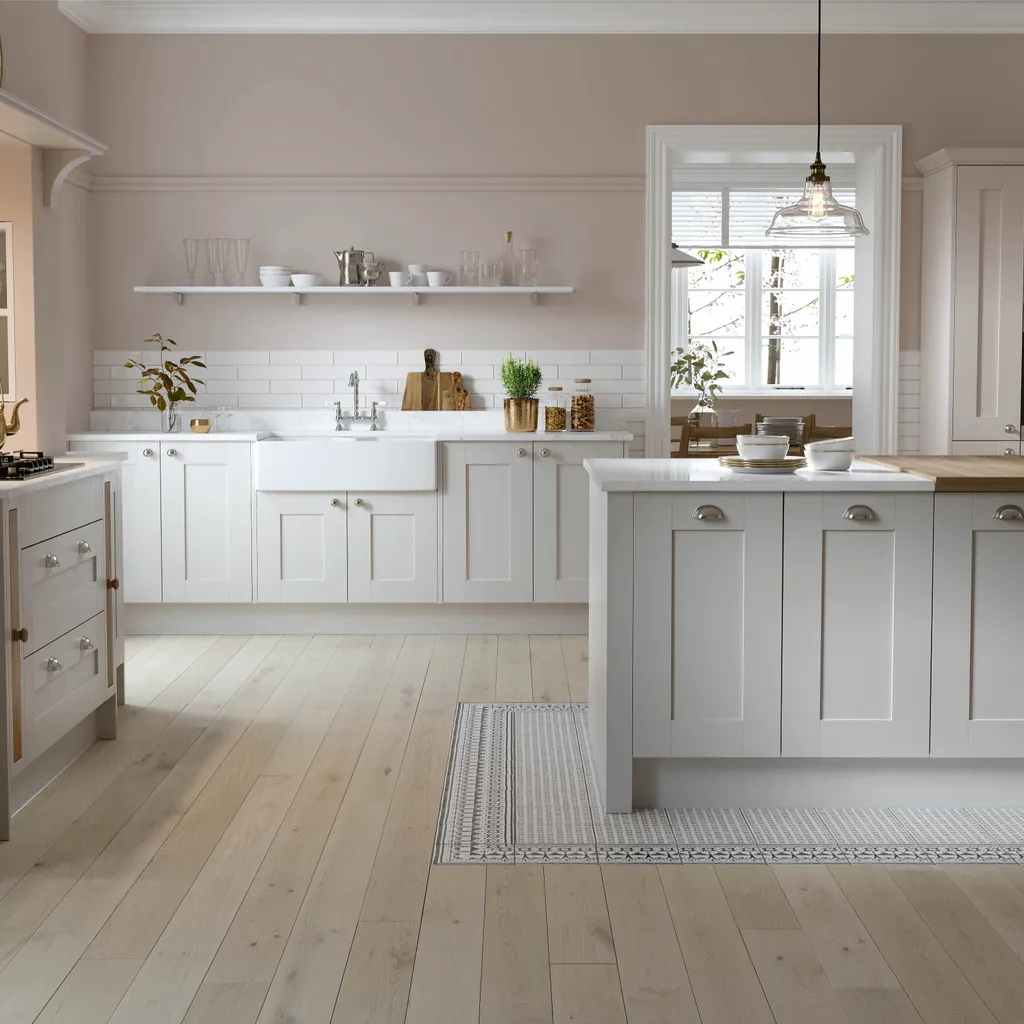
Invest in a range cooker
A freestanding range cooker is a country kitchen essential. Not only do they look the part and give off cosy warmth, but they have a larger cooking capacity than a standard oven, making them ideal for those who like to entertain. Ranges are an investment, but worth considering.
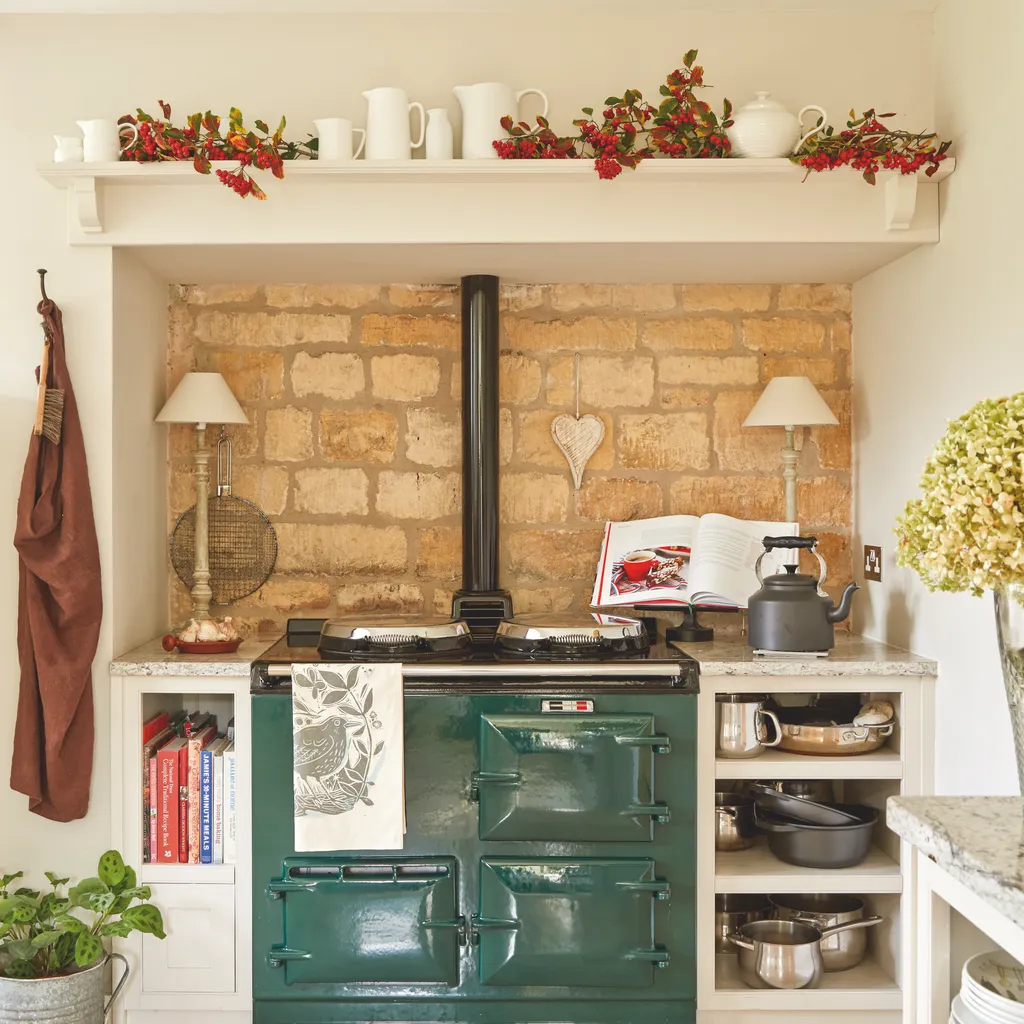
Create displays of antique and vintage crockery
Displays of vases, jugs, crockery and even serving and cookware will enhance the inviting, lived-in feeling of a country kitchen. Be brave, lovers of antique and vintage kitchenalia, and put your treasures on show! Opt for rustic finds for a traditional feel and don’t be afraid to display en masse.
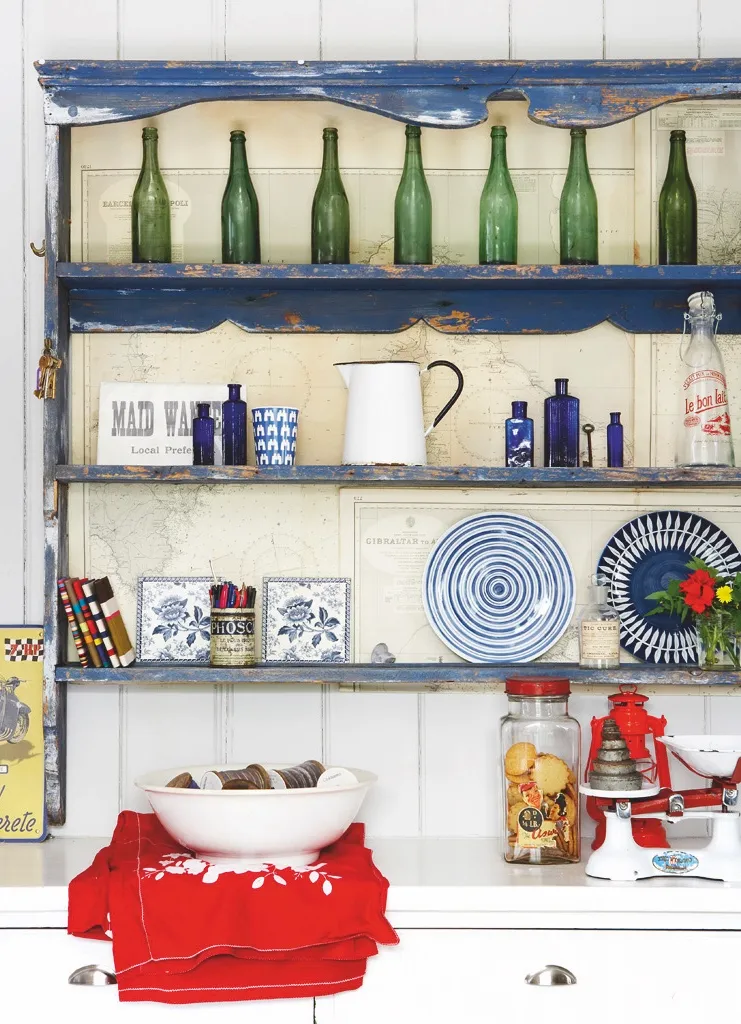
Try open shelving
Open shelves may seem less tidy than enclosed cupboards, but they fit well with the rustic aesthetic and help to create a relaxed atmosphere. Fill yours with natural textures like linens and baskets, or even use as a wood store, to complete the country vibe.
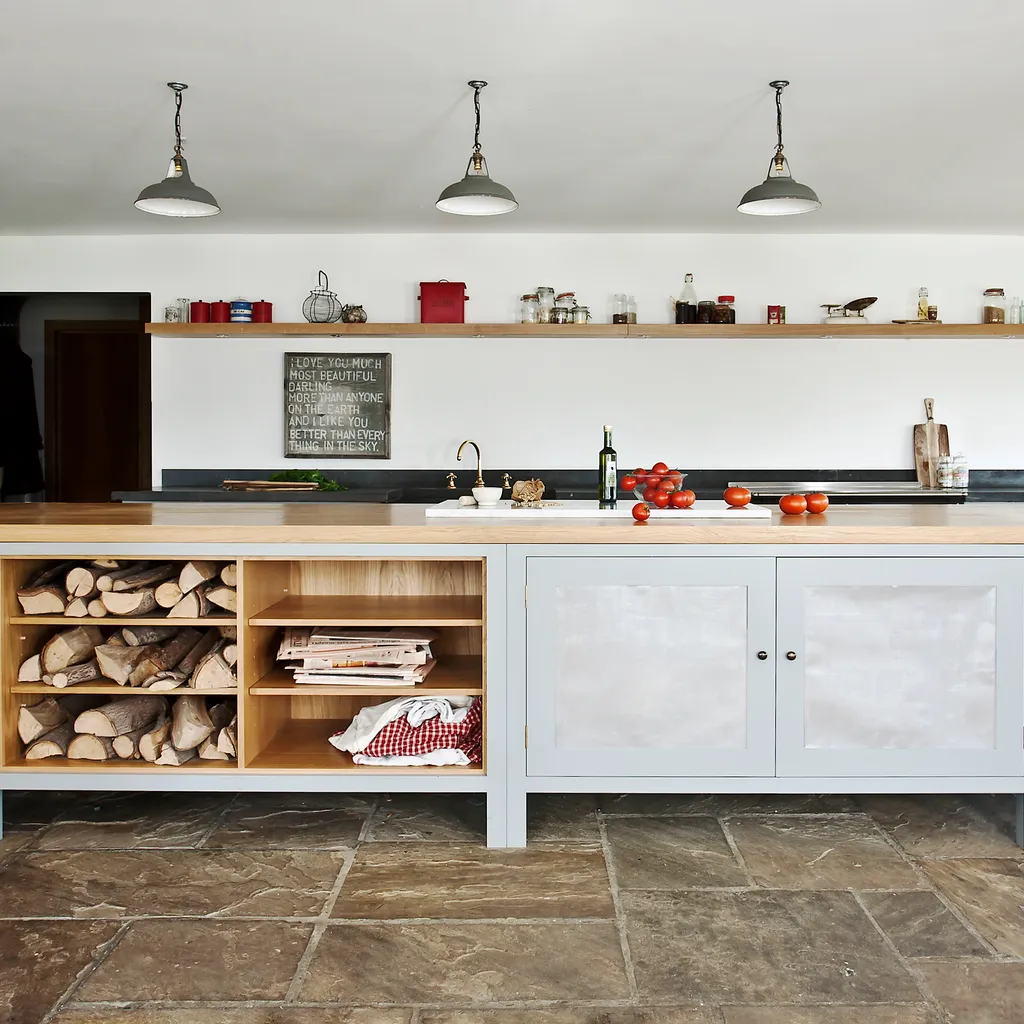
Consider freestanding units and furniture
For a modern-rustic finish, forego all-fitted units and mix in freestanding pieces instead. In this kitchen by deVOL, a blend of built-in units and freestanding vintage furniture creates an eclectic rural look.
A former butcher’s block doubles up as a stylish breakfast bar and extra worktop. Its undulating surface oozes charm – but if you need a more practical countertop, you could consider topping it with a thin slab of marble or stainless steel. To keep the style sophisticated, choose rich navy cabinets and brass door furniture.

Evenly distribute lighting
According to Nicky Spear, Managing Director of Sustainable Kitchens, because the kitchen has the most varied activities of any room, the lighting needs special consideration. The aim should be for an even distribution of light, with pendant lighting complementing the natural light available.
Carefully placed spotlights will help with tasks such as chopping and cooking, while statement lights can add character or grandeur. ‘Vintage chandeliers can easily be rewired, offering an enchanting focal point and diffusing a soft, flattering light,’ she says.
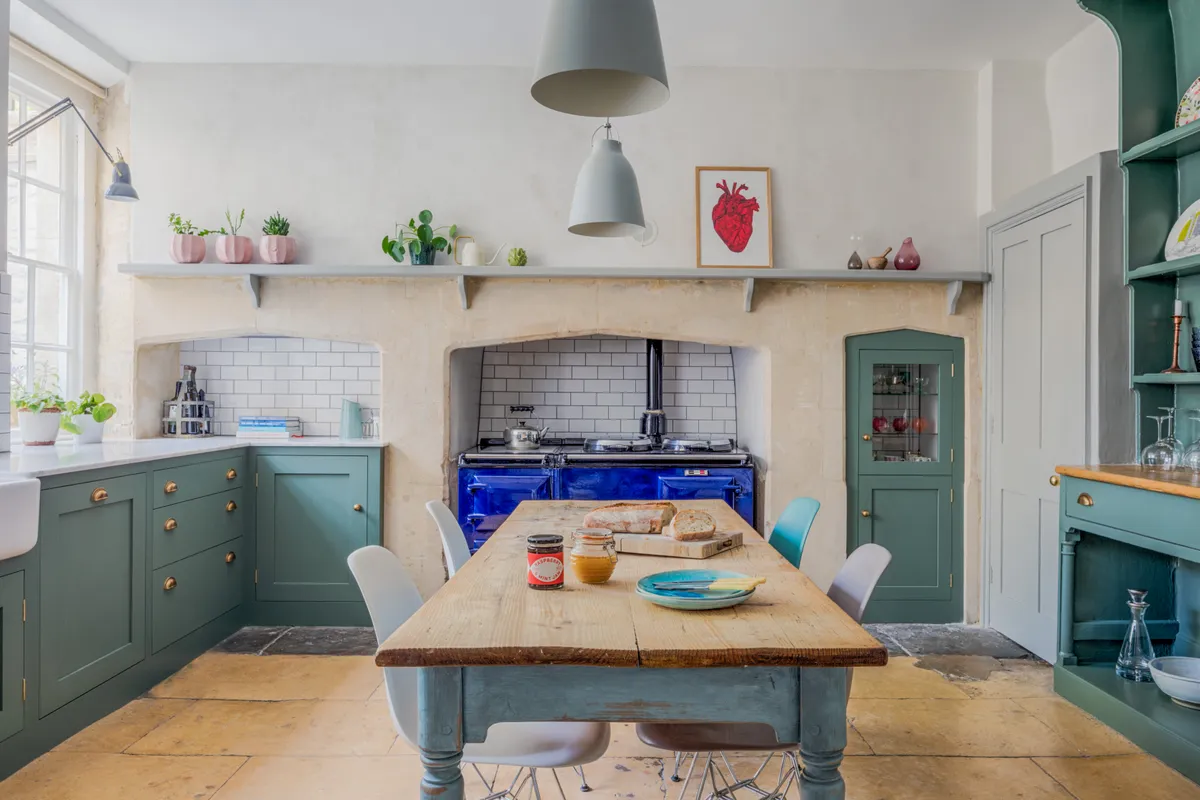
Choose hardwearing, practical flooring
The busiest room in the house needs flooring that is hardwearing and practical. Luckily for fans of the country kitchen style, there are several such options to choose from. Wooden boards, whether original or laid on top of the existing floor, are a popular choice as are ceramic tiles, reclaimed terracotta and, as seen here, natural flagstones.
Don’t forget to consider underfloor heating – it is energy efficient and, with no wall-hung radiators, allows you to dedicate more space to cupboards and worktops.

How to use salvage in your kitchen
Alex Main of kitchen specialist The Main Company shares his advice:
If you value character and individuality in your home, choose salvaged materials such as flooring and worktops. These are regularly used by the more imaginative kitchen companies, as are reclaimed sinks, lighting, standalone cabinets and accessories, such as hooks and handles.
According to Alex Main, Director of The Main Company, which specialises in incorporating salvaged and reclaimed materials into its bespoke kitchens, there are virtually no limits to the materials that can be reused, but items like reclaimed floorboards are an obvious choice for their solidity and durability. Likewise, countertops are often sturdier and heavier than what you might get with a new equivalent, and also offer a patina that only comes with age and is brilliant for disguising scratches and knife marks.
Alex recommends online auction sites for sourcing reclaimed materials such as floors, but make sure you buy enough for the space, allowing for 10 per cent wastage, and do check for woodworm. Wooden items that may have been in a damp environment, like butcher’s blocks, will need to be dried out for six months before being fitted as they may otherwise split.
‘Standalone pieces are great for creatinga statement,’ says Alex. ‘Matching a dresser with a butcher’s block is a good way to incorporate them into the rest of thescheme.'